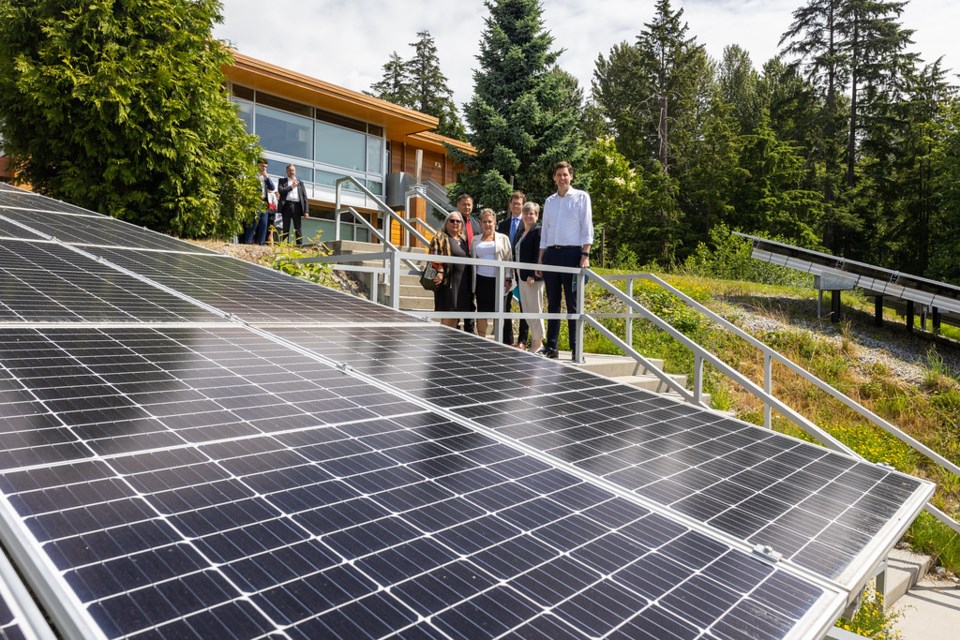The BC government expects the demand for electricity will grow by 15 per cent by 2030. And while BC Hydro plans to add about 3,000 gigawatt hours of power through a new power call, Scheider Electric also thinks ordinary homeowners and businesses in B.C. could be chipping in with more rooftop solar.
Emily Heitman, country president for Schneider Electric, said businesses and homeowners could help BC Hydro obtain more power through increased prosumerism.
That’s where individuals or businesses invest in power generation and sell some of the power back to the power utility – more commonly known in B.C. as net metering.
This prosumer model already exists in B.C. Certain industries, like pulp mills and aluminum smelters, already produce their own electricity and sell any surplus to BC Hydro.
And as of last year, there were 6,500 customers with rooftop solar power who participate in BC Hydro’s net metering program. Under net metering, customers who generate more electricity than they consume receive a credit. Customers that have excess credits on their anniversary date are paid by BC Hydro for that surplus electricity.
Heitman thinks there are opportunities to expand the number of businesses and homeowners participating in such “prosumer” programs.
“There is a big need for more electrical capacity on the grid, and one of the ways that we believe – and the technology exists to help support that demand – is also local generation at homes and at buildings to help supplement the expansion of the grid itself,” Heitman said.
“At Schneider Electric, we are prepared to collaborate with both the government and prosumers to provide, not just advice, but also a comprehensive suite of technologies that serve this optimizing the Canadian energy production and consumption,” Heitman said.
Heitman noted there are a number of federal grant programs available to help businesses and homeowners with the upfront costs of installing rooftop solar power.
They include:
- the cleaner homes grant, which gives homeowners $1 per watt of solar power generation installed, up to $5,000
- the Canadian greener homes loan, up to $40,000
- the cleaner technology investment tax credit, which refunds up to 30 per cent of the investment in clean technology
“The Canadian solar market has been historically been relatively slow, compared to other developed nations,” Heitman said. “Today what we call the behind the meter solar really only meets about 0.2 per cent of the load across Canada, versus two per cent in the U.S.”
A quick glance at a North American solar radiation map may help explain why – Canada doesn’t get a lot of sun.
Even so, homeowners and businesses who can afford to invest in solar power could see their power bills reduced, though the payback period can be 10 to 15 years.
According to Schneider Electric, a 12-kilowatt (kW) system installed in B.C. would yield an estimated 12,000 kilowatt hours per year of electricity. The average home in B.C. consumes about 11,000 kWh of electricity annually. So a 12-kW system would generate 109 per cent of the energy required.
The payback period for a rooftop solar system is about 10 to 15 years. Rooftop solar panels are estimated to last 25 to 30 years before they need to be replaced.



